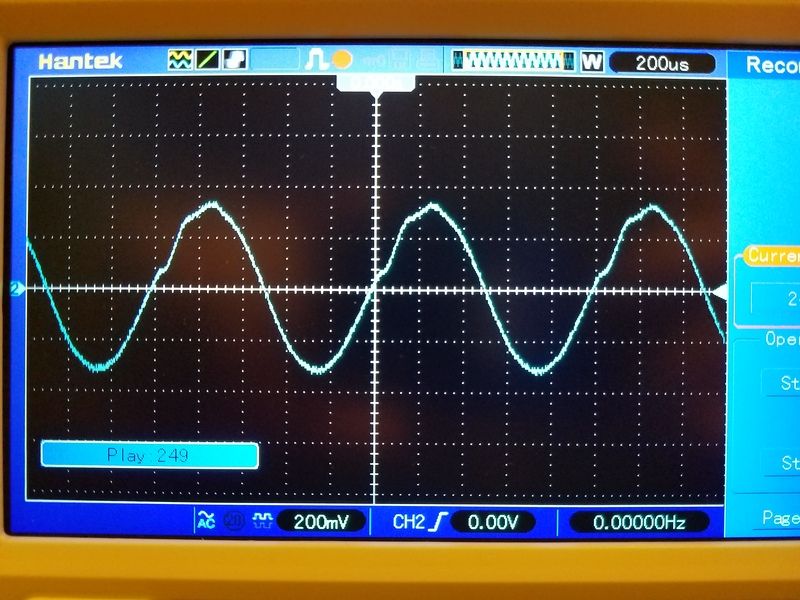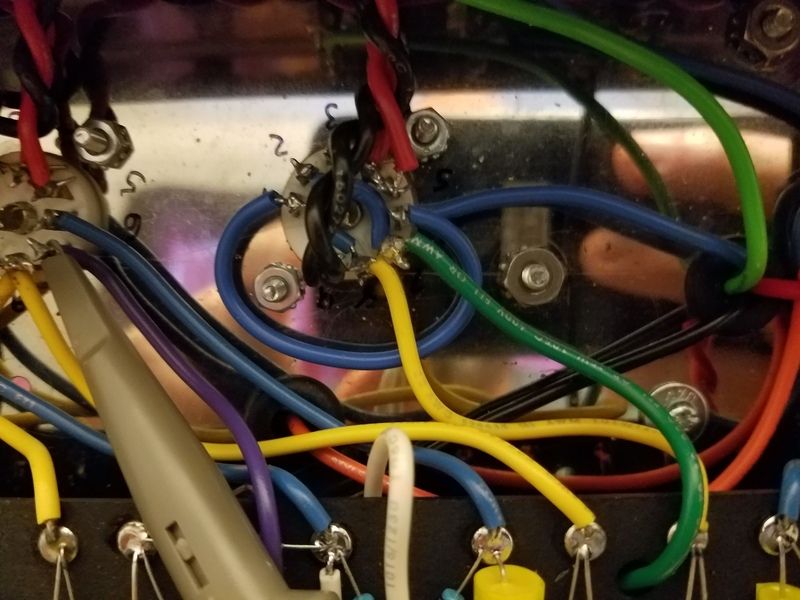Originally posted by tubeswell
View Post

That's V2b grid. Vibrato channel, vol knob around 5-6 is where this happens. I'm injecting a 1k sine about 300 mv pk to pk into input 1, and that's the weirdness I'm getting on the 2nd stage.
Here's a little video sweeping the volume knob on V2.
What do yall think of that kink in my sine wave?
That does not happen on the normal channel.
This is probably not related to my brittle noise, but it caught my attention anyway.


Comment